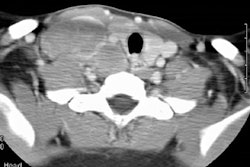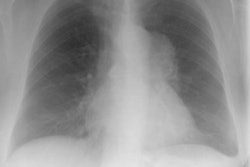Mayo Clin Proc 1995 Oct;70(10):969-977
Castleman's disease.Shahidi H, Myers JL, Kvale PA
OBJECTIVE: To describe the two variants of Castleman's disease--the hyaline-vascular type and the plasma-cell type--and discuss the associated histologic features. DESIGN: We present a case of the hyaline-vascular type and review the literature. RESULTS: Castleman's disease was once thought to be localized and self-limited, but in recent years, reports have described a multicentric variety with severe systemic manifestations and, at times, an inexorable clinical course. Unlike the localized type for which surgical excision is curative regardless of the histologic type, multicentric disease often necessitates aggressive systemic therapy and portends a poor outcome. Little is known about the cause of this disorder, but the bulk of evidence points toward faulty immunoregulation that results in excessive proliferation of B lymphocytes and plasma cells in lymphoid organs. CONCLUSION: Castleman's disease is rare and poorly understood. The diagnosis is "contextual" and must be considered in the appropriate clinical setting and only after all other causes of lymphadenopathy have been investigated and excluded. The optimal therapeutic regimen is unknown.




